#xix century england
Explore tagged Tumblr posts
Text
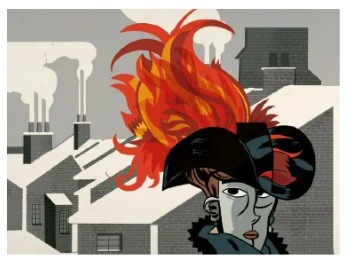
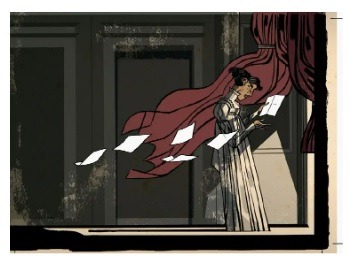


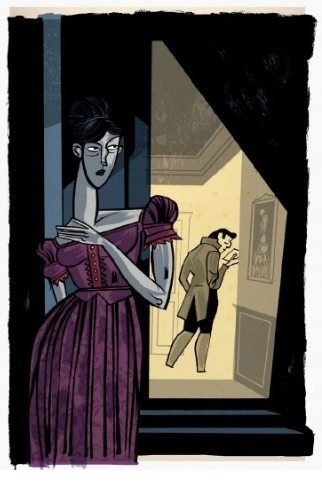

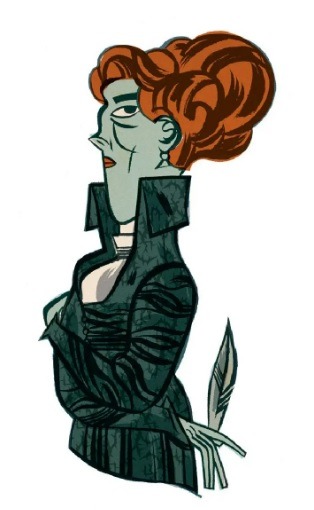
Lindas ilustrações da edição em espanhol de Lady Susan da Jane Austen! Feitas por Javier Olivares (@olivaresilustracion) Apesar de menos conhecido, Lady Susan é envolvente, hilário e meio chocante. Dizem que Jane Austen baseou sua anti-heroína em uma de suas concunhadas. Para saber mais é só ler aqui.
.
Amazing illustrations of Jane Austen's Lady Susan. By artist Javier Olivares (@olivaresilustracion)
#jane austen#lady susan#love and friendship#austen adaptations#pride and prejudice#lady susan vernon#p&pedit#sense and sensibility#jane austen juvenilia#elizabeth bennet#mr darcy#english literature#georgian era#xix century england#literature illustration
24 notes
·
View notes
Text
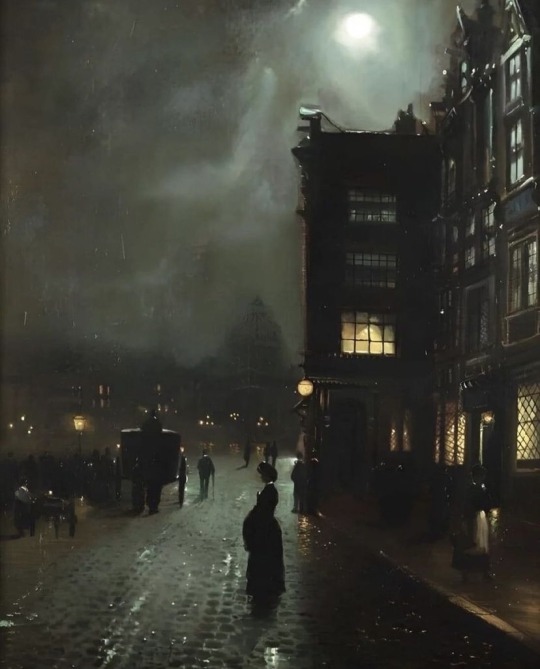
A Victorian woman in the streets of London, by Walter Linsley Meegan
#victorian#victorian woman#art#painting#classic art#illustration#traditional illustration#xix#xix century#england#victorian england#queen victoria#black#night art#night#moon art#moon
59 notes
·
View notes
Text

Reign 2013-17
Toby Finn Regbo as Francis Valois
Dentro al mio petto è una candela accesa,
Di dentro brucia e di fuori non pare.
Se c'è qualcun che abbia provato amore,
Abbia pietà del mio 'nfiammato core...
(Giuseppe Tigri, Canti Popolari Toscani, Amore Sfortunato, 1856)

#francis de valois#toby regbo#reign#season1#face expression#mary stuart#adelaide kane#mary×francis#frary OTP#love and duty#b&w#dauphin of france#future king#war#england#enemies#calais#bash#brothers#henry valois#father#king of france#french court#he is beautiful#giuseppe tigri#canti popolari toscani#xix century#love poems#medici ancestors#italian poetry
14 notes
·
View notes
Text
John Atkinson Grimshaw is one of the best painters you've never heard of!
He was wildly popular in the 19th century,and for one very specific reason :
Grimshaw was a master of painting the night...




#john atkinson grimshaw#painters#painter#peintalamain#peintre#peinture#england#london#night#nuit#noches#notas tristes#notas de noche#landschaft#landscape#landslide#museedesbeauxarts#museedorsay#musee#museedulouvre#xix century
2 notes
·
View notes
Text

The British Monarchy & Flat Cap. По одной из версий, толчком к повсеместной моде на головные уборы из шерсти, послужил английский указ 1571 года, который строго предписывал носить кепки и шапки молодым людям старше 6 лет по выходным дням и праздникам. Причем обязательно местного производства. По замыслу, это должно было способствовать росту производства шерсти, и способствовало поддержке британских шляпников. Как видим, это дало результат: сегодня одними из лучших мировых производителей шерстяных изделий, в том числе кепок и шляп из твида, считаются Англия, Шотландия и, конечно, Ирландия. Наибольшую популярность мужские кепки получили в конце XIX и XX веках. Носили их как простые рабочие, моряки, водители, так и представители интеллигентных профессий, не гнушались и аристократы! Кепка не была предназначена для выхода в свет или торжественных мероприятий - для этого существовали шляпы. Этикет того времени предписывал носить кепку на охоту, рыбалку или спортивные мероприятия. В кепках играли в футбол, теннис, крикет, гольф. Это был будничный аксессуар, который могли себе позволить самые широкие слои населения.
According to one version, the impetus for the widespread fashion for woolen hats was the English decree of 1571, which strictly prescribed that young people over 6 years old wear caps and hats on weekends and holidays. And they had to be locally produced. According to the plan, this was supposed to promote the growth of wool production and contribute to the support of British hatters. As we can see, this gave a result: today, England, Scotland and, of course, Ireland are considered to be among the best world manufacturers of woolen products, including caps and tweed hats. Men's caps gained their greatest popularity in the late 19th and 20th centuries. They were worn by ordinary workers, sailors, drivers, and representatives of intelligent professions, and aristocrats did not disdain them either! . The cap was not intended for going out or special events - hats existed for that. The etiquette of that time prescribed wearing a cap for hunting, fishing or sporting events. Caps were worn for football, tennis, cricket and golf. It was an everyday accessory that the broadest strata of the population could afford.
11 notes
·
View notes
Text

Чашки для усатых джентльменов. Англия, XIX век.
Cups for moustached gentlemen. England, 19th century.
7 notes
·
View notes
Text
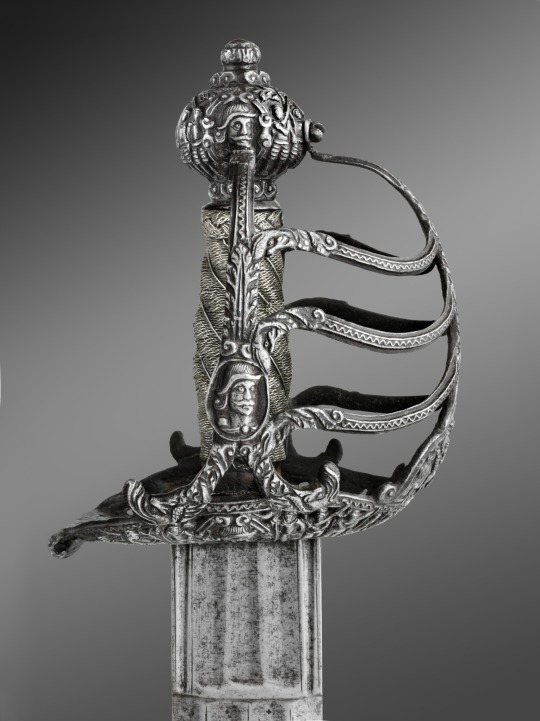
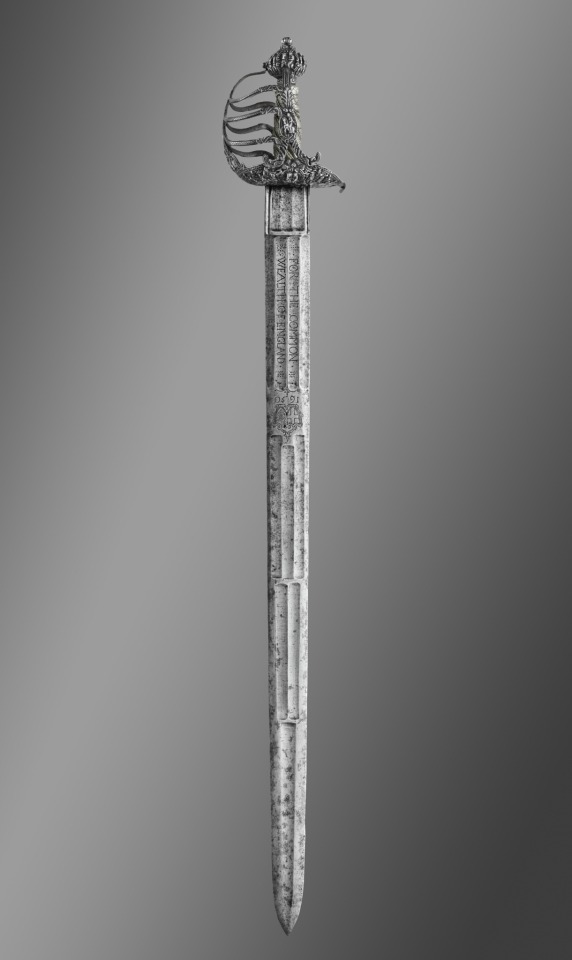
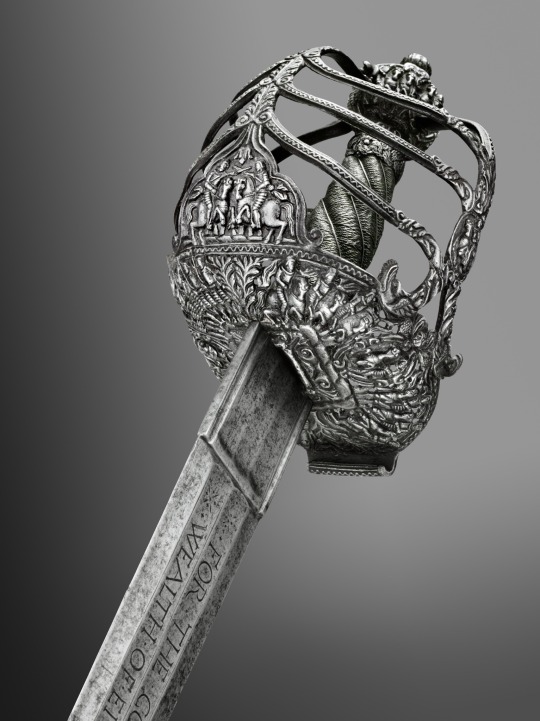

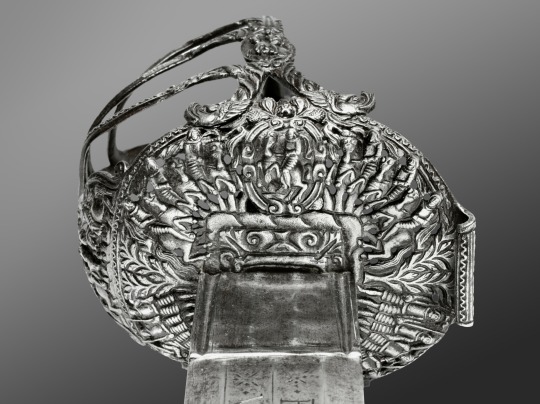
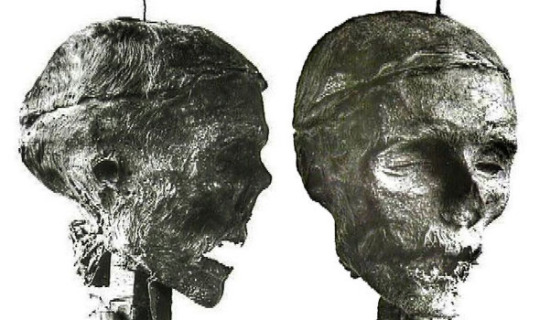

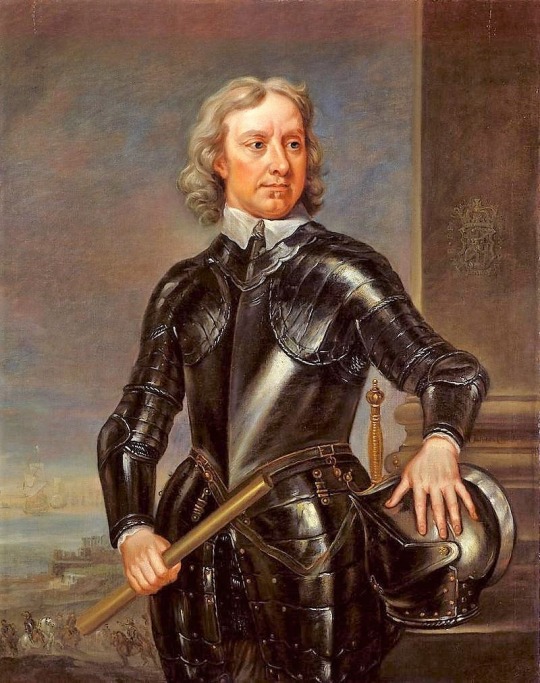

⚜️ Broadsword of Oliver Cromwell, England, c. 1650
Medium: Iron alloy (steel), partially engraved; chiseled; silver wire; wood
Length (overall): 96.8 cm
Blade: 82.6×4.9 cm
Hilt: 12.9×11.7 cm
Pommel: Height-5.4 cm, Diameter-3.3 cm
Weight: 1405 g
Facts:
▪️ August 9, 1655 - Lord Protector Oliver Cromwell divides England into 11 districts
▪️ Cromwell is an iconic figure in British history
▪️ He was a key figure in the trial and execution of King Charles I
▪️ He has the peculiar distinction of being the only political criminal to be executed two years after his death
Cromwell was exhumed from his grave in 1661 and put on trial by the late king's son, Charles II. Posthumously convicted of high treason, Cromwell's corpse was hanged and beheaded, and his head was impaled on a 6-meter spike atop Westminster Hall. The mummified head remained on the spike for more than 20 years
▪️ In 1960 (300 years after Cromwell's death), Dr. Horace Wilkinson donated the head to Sidney Sussex College at Cambridge, Cromwell's alma mater
"Cromwell's head is buried somewhere in the college chapel, supposedly in a biscuit tin" (says Stuart Orme, curator of the Cromwell Museum)
▪️ Cromwell's most famous quote is "Put your trust in God, my boys, and keep your powder dry," but there's no proof that he actually said it. The line comes from a 19th-century poem called "Oliver's Advice" based on a "well-authenticated anecdote" associated with Cromwell
▪️ September 3 is a fateful date: Cromwell routed the Scots at Dunbar (1650). The Battle of Worcester would prove to be the final action of the English Civil Wars (1651). Cromwell's first Parliament met on 3rd September, 1654.
▪️ Cromwell died suddenly at age 59 on 3rd September 1658. He suffered from a lethal combination of malaria and typhoid fever.
- -
⚜️ Палаш Оливера Кромвеля, Англия, ок. 1650
Материалы: сталь, гравировка; серебряная проволока; дерево
Длина (общая): 96,8 см
Лезвие: 82,6×4,9 см
Рукоять: 12,9×11,7 см
Навершие: высота-5,4 см, диаметр-3,3 см.
Вес: 1405 г
Факты:
▪️ 9 августа 1655 г. Лорд-протектор Оливер Кромвель делит Англию на 11 округов
▪️ Оливер Кромвель - человек, повлиявший на ход истории Англии
▪️ Он был ключевой фигурой в судебном процессе и казни короля Карла I
▪️ Известен тем, что является единственным политическим преступником, казненным через 2 года после своей смерти. Был эксгумирован в 1661 г. и предан суду сыном покойного короля Карлом II. Посмертно осужденный за государственную измену, труп Кромвеля был повешен и обезглавлен, а его голова была пронзена 6-метровым штырем. Мумифицированная голова оставалась на крыше Вестминстерского дворца более 20 лет
▪️ В 1960 г. (через 300 лет после смерти Кромвеля) доктор Гораций Уилкинсон пожертвовал его голову колледжу Сидни Сассекс в Кембридже, альма-матер Кромвеля.
"Голова Кромвеля похоронена где-то в часовне колледжа, предположительно в банке из-под печенья" (Стюарт Орм, куратор музея Кромвеля)
▪️ Самая известная цитата Кромвеля: "Уповайте на Бога, мальчики мои, и держите порох сухим", но нет никаких доказательств того, что он действительно это сказал. Эта строка взята из стихотворения XIX в. под названием "Совет Оливера", основанного на "достоверном анекдоте", связанном с Кромвелем
▪️ 3 сентября - роковая дата Кромвеля. В этот день он одержал победу над шотландцами при Данбаре (1550), разгромил отряды Карла I в Вустере (1651). Первое заседание созданного Кромвелем парламента (1654), после чего этот день был объявлен Днем благодарения.
▪️ Умер 3 сентября 1658 г. в возрасте 59 лет от малярии и брюшного тифа
#кромвель #Cromwell #Broadsword #палаш #меч #вооружение #armsandarmor
#medieval#средневековье#middleages#history#история#arms and armor#broads and broadswords#broadsword#вооружение#меч#палаш#кромвель#оливер кромвель#oliver cromwell
104 notes
·
View notes
Text
Streghe (witches)

Virgil Finlay (1914-1971, USA)
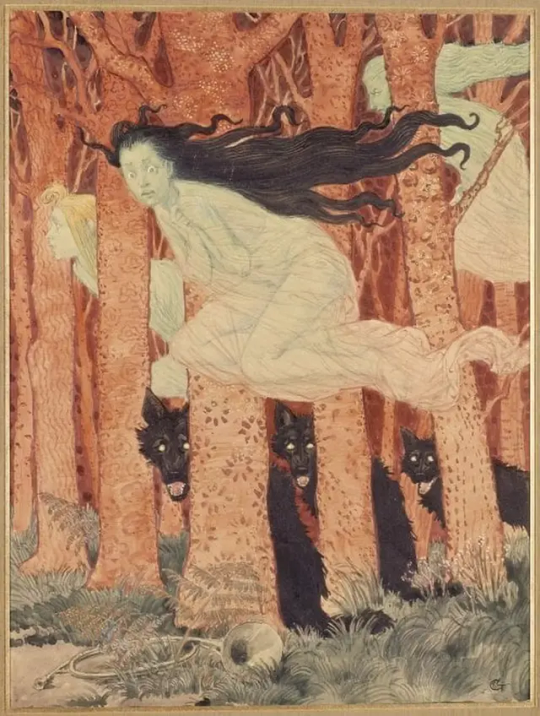
Trois femmes et trois lupus | Eugene Grasset (1845-1917, France)

La sorcière, 1882 | Luis Ricardo Falero (1851-1896, España)

Metamorphosis - black cats transforming themselves into witches, late 19th century | Théophile Alexandre Steinlen (1859-1923, Switzerland)
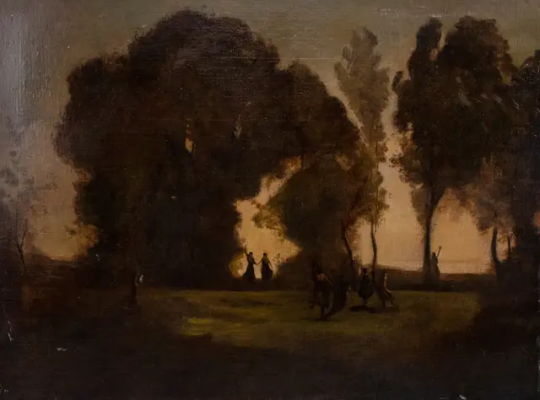
The night of wicked fairies | Michel Simonidy (1870-1933, Romania)

Demon | Franciszek Żmurko (1859-1910, Poland)
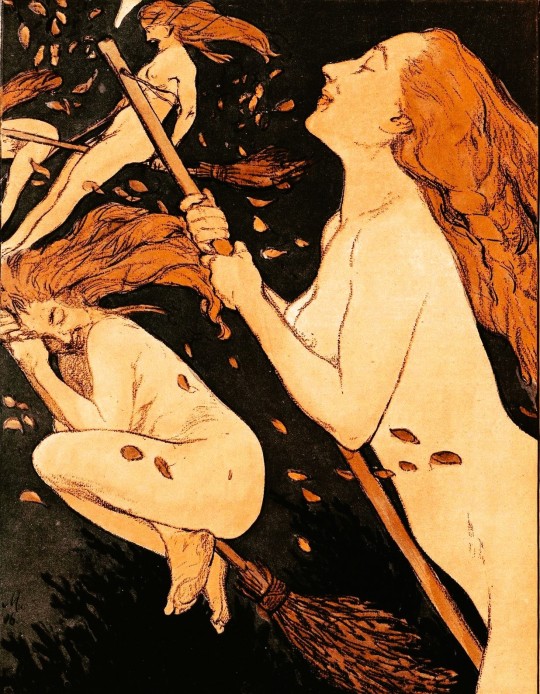
Walpurgis Sabbath- cover from 'Jugend' magazine, 1909 | Adolf Münzer (1870-1953, Poland)
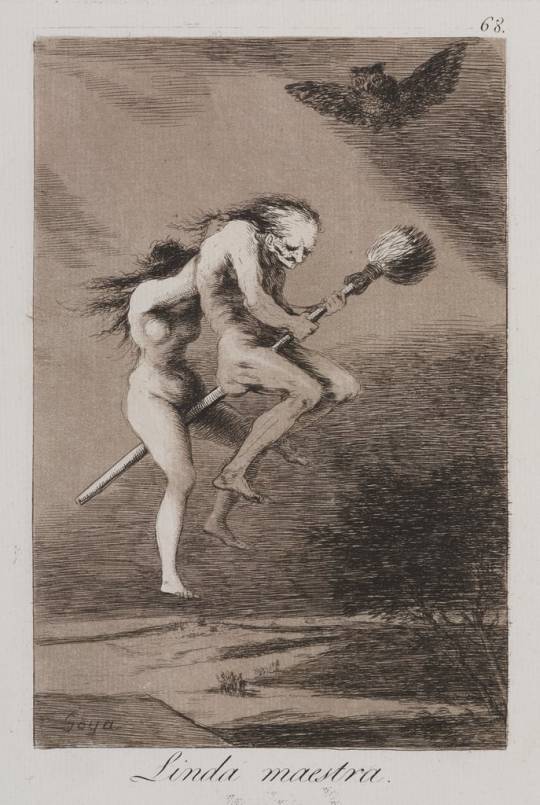
Linda maestra (pretty teacher), from the ‘Caprichos’ series, 1797-99 | Goya (1746-1828, España)
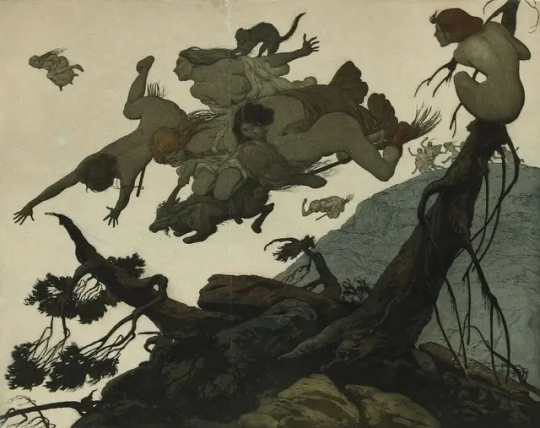
Valpurgis morgen, 1908 | Louis Moe (1857-1945, Norway)

Sorcières, 1888 | Joseph Apoux (1846-1910, France)

Streghe moderne (Sorcières modernes) | Jean Veber (1864-1928, France)
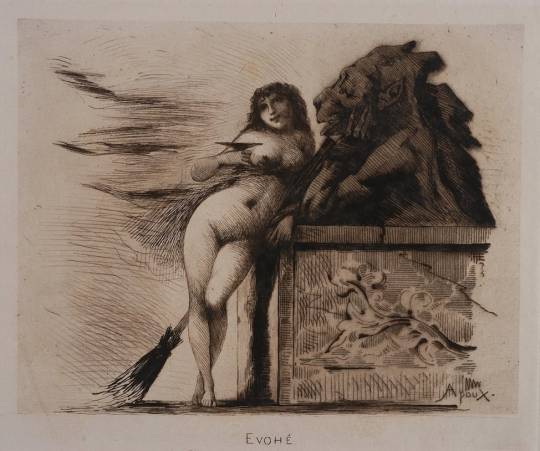
Evohé, 1888 ca. | Joseph Apoux (1846-1910, France)
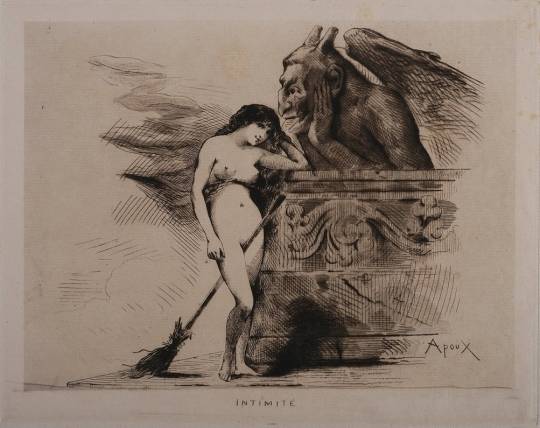
Intimite, 1888 ca. | Joseph Apoux (1846-1910, France)
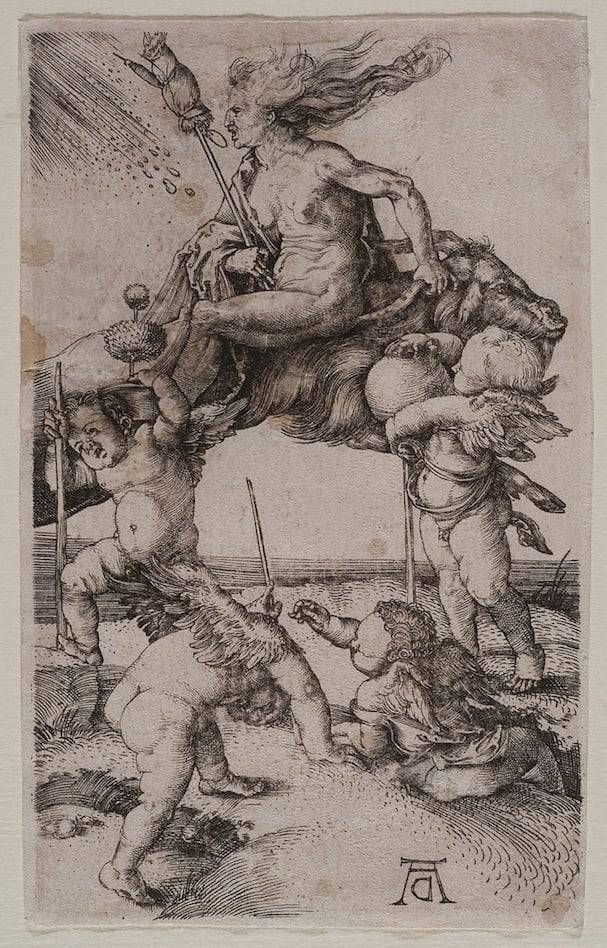
La strega sul caprone (La sorcière renversée sur la chèvre), 1500-05 | Albrecht Durer (1471-1528, Germany)
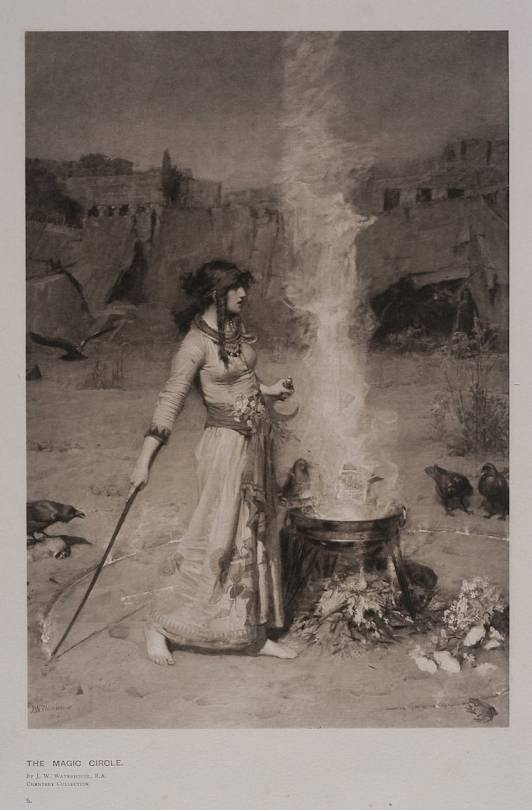
The magic circle | John William Waterhouse (1849-1917, England)
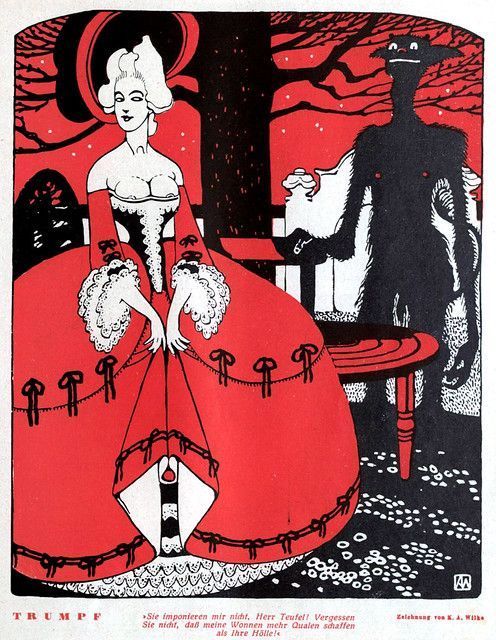
Trumpf (carta vincente) - from 'Die muskete' magazine, 1926 (december) | Karl Alexander Wilke (1879-1954, Germany-Austria)
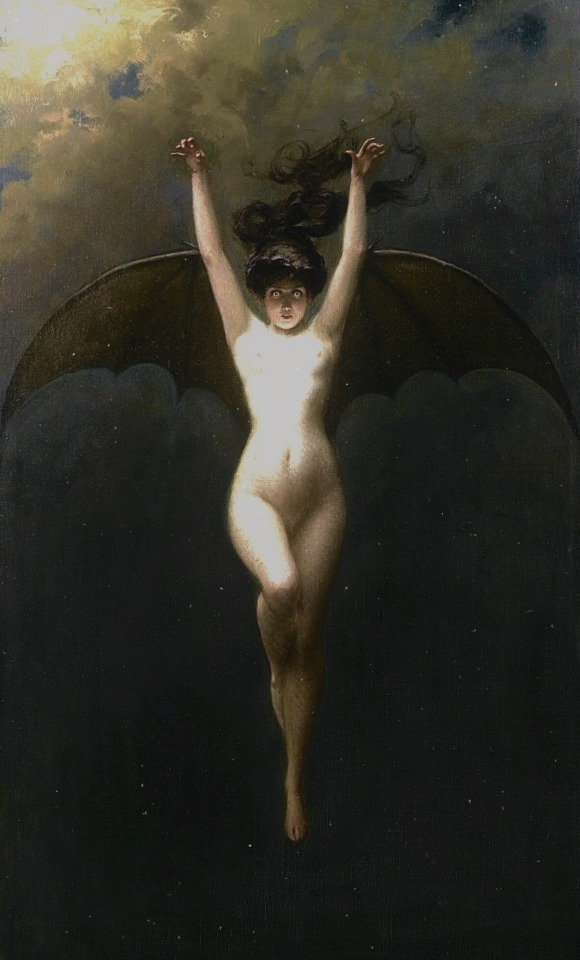
La Femme Chauve-Souris (The Bat-Woman), 1890 | Albert Joseph Pénot (1862-1930, France)

Départ pour le Sabbat, 1910 | Albert Joseph Pénot (1862-1930, France)
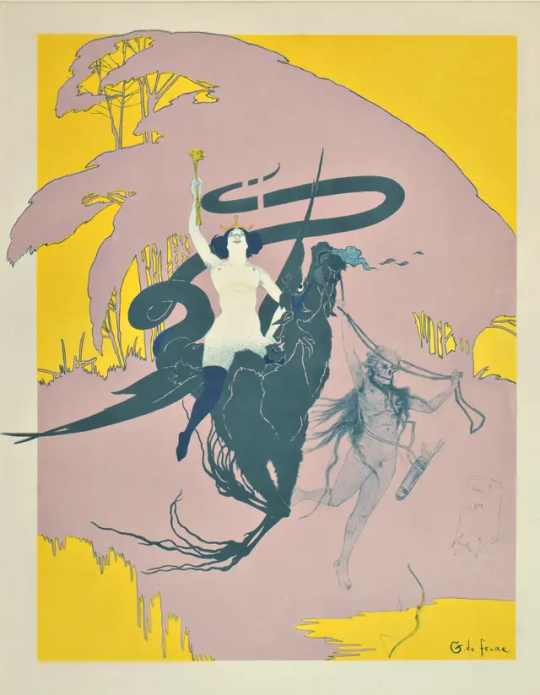
L'amour libre | Georges De Feure (1868-1943, France)

Aradia dea delle streghe, 1900-10

Rito di Benedizione al parto (birth blessing rite), Roma, 2021 | ph., Valeria Gradizzi (1979, Italia)

Magia nera, XVIII-XIX secolo (18th-19th century) | Giuseppe Bernardino Bison (1762-1844, Italia)
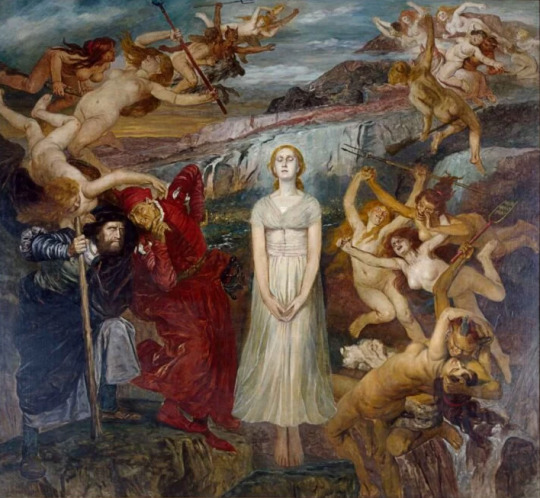
Walpurgis Night Scene (from Goethe Faust), 1910 | Fritz Roeber (1851-1924, Germany)
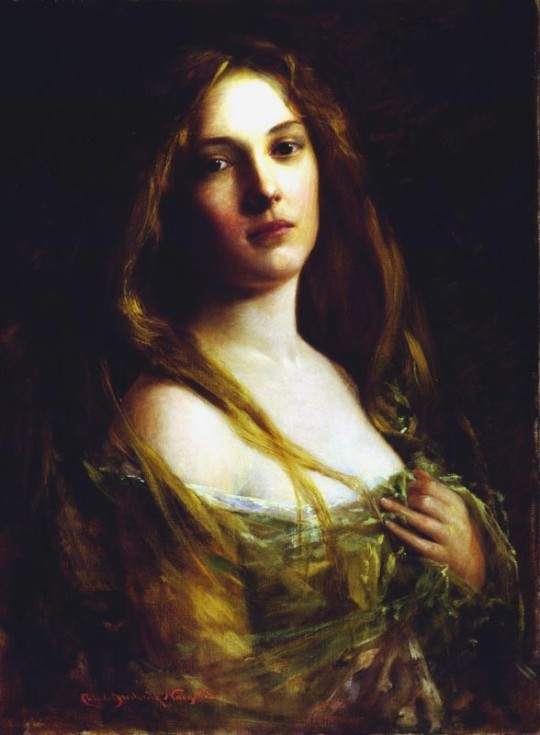
Gentile Budrioli (she died at the stake in Bologna accused of witchcraft) | Charles Frederick Naegele (1857-1944, USA)

Anniosette | ph. Mogens Berger (1933-1993, Denmark)
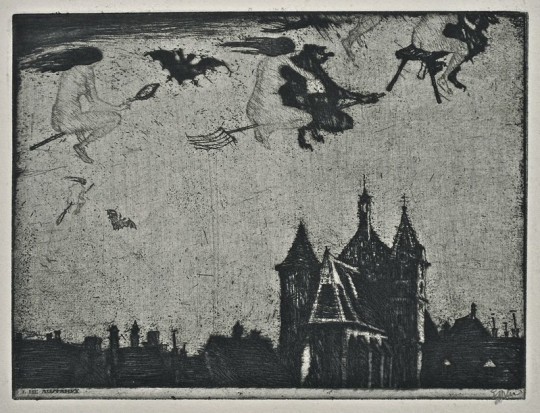
The Walpurgisnacht Portfolio (one of six etchings after Gustav Meyrinks), 1922 | Stefan Eggeler (1894-1969, Austria)

The Walpurgisnacht Portfolio (three of six etchings after Gustav Meyrinks), 1922 | Stefan Eggeler (1894-1969, Austria)
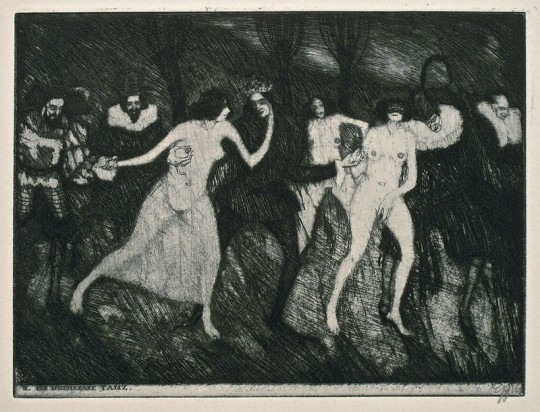
The Walpurgisnacht Portfolio (four of six etchings after Gustav Meyrinks), 1922 | Stefan Eggeler (1894-1969, Austria)
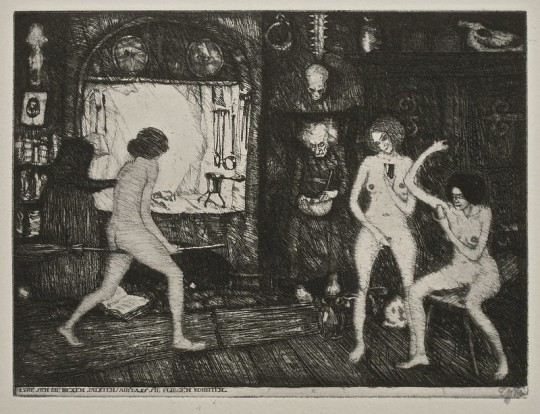
The Walpurgisnacht Portfolio (five of six etchings after Gustav Meyrinks), 1922 | Stefan Eggeler (1894-1969, Austria)
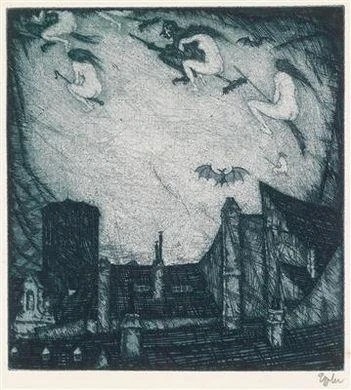
Untitled (witches) | Stefan Eggeler (1894-1969, Austria)
23 notes
·
View notes
Text
In that search for allies, in particular against France, English rulers had in the past largely confined themselves to two main sources: the Iberian peninsula and the Low Countries. But if any kind of effective encirclement of France was to be considered, or a joint north–south pincer-style operation undertaken, then an alliance – or at least a guarantee or likelihood of neutrality – might be sought with one or more of the Italian principalities or republics. And in the changed and changing political conditions of the later fifteenth century, a permanent English presence at the papal court in Rome, backed by Italian agents and allies, was also increasingly desirable [...] In 1463, both Ferdinand I, king of Naples, and Francesco Sforza, duke of Milan, became knights of the Order. Their evident value as potential, if not actual, opponents of French claims to Aragonese held Naples on behalf of the house of Anjou, and Sforza’s succession to the duchy of Milan in the face of French-backed Orleanist rivalry in 1450, made them potentially useful allies. Then, in 1474, Federigo da Montefeltro, duke of Urbino, was elected, while in 1480 Ercole d’Este, duke of Ferrara became a member. A greater presence of ‘foreigners’ among the knights of the Garter, especially under Edward IV and, to a slightly lesser extent Henry VII, may be revealing of England’s changed situation. Under Edward, eight were elected, of whom four were Italian, three Iberian and one Burgundian (Charles the Bold). Under Henry VII, six were elected, of whom three were Habsburgs (and therefore Austro-Spanish), two were Italian and one Scandinavian.
— Malcom Vale, 'England and Europe, c.1450–1520: Nostalgia or New Opportunities?' | The Fifteenth Century XIX: Enmity and Amity
6 notes
·
View notes
Text





“Why seek ye the living among the dead?, by John Roddam Spencer Stanhope
#england#victorian england#art#painting#classic art#illustration#traditional illustration#xix#xix century#catholic#catholiscism#catholic church#jesus#jesus christ#christian aesthetic#christianity#son of god#john roddam spencer stanhope#europe#oil on canvas#oil painting
36 notes
·
View notes
Text
@alex51324 asked me about Soviet YA novels, I’ll try to tell as much as I can remember.
As a Soviet (especially, the later period) child, you were covered. My mum read me and my brother books before we went to bed up until I was 12 and my brother was 10. There was a variety of stories, both Soviet and translated, including Tove Jansson, Astrid Lindgren, A.A. Milne, Gianni Rodari et al. Soviet authors included N.Nosov, S.Mikhalkov, S.Marshak, K.Chukovsky, A.Barto, E. Uspensky, G. Oster, A. Nekrasov, That is, speaking of the XX century literature. Earlier fairy tales were abundant too. One funny thing I need to mention is that in the USSR copyright laws were different, so reworkings of foreign works were published as original works (fanfiction could fly in the USSR), so we had The Wizard of the Emerald City by A.Volkov (The Wizard of Oz) and its multiple original sequels, and The Golden Key by A.Tolstoy (Pinocchio). My cousin also had a weird little book with a fat man sitting by a round door on the cover. It was some obscure children’s book from England with a weird name, published in the 80s. Something that would never catch up as it had no princesses or knights, phew.
I wasn’t a Soviet child as I was born 1 year before the collapse, but most books in my town’s library and at my home were Soviet or republished.
When you became 12-13, it suddenly became a bit more difficult. You started looking at books that were written for adults in the XIX century.
Out of distinctly YA Soviet literature, I remember sci-fi (Kir Bulychev for younger readers and the Strugatsky brothers for like 13+), novels about girls living in small towns and falling in love for the first time before something very dramatic like war, revolution or moving to another town, happened (I don’t remember any names except for Wild Dog Dingo by Ruviim Frayerman) and high, almost fantasy romance like Crimson Sails by A.Grin. There were also books about young revolutionaries or war heroes, I wasn’t very much into them, but I liked The Story about a Real Man by B.Polevoy about a Soviet pilot who lost both his legs and continued serving as a pilot in WW2, it was based on a true story. There was also a micro genre of stories about orphans, with such authors as Lev Kassil, and Belykh and Panteleyev.
As much as I liked stories about princesses as a child, I didn’t really care about stories of first love as a teen. At 14 I completely reverted to foreign classical literature, reading A.Dumas-father, A.C. Doyle, Poe, Wilde, Stevenson etc. I think most Soviet teen readers did the same. Jules Verne was also big as were Twain, O.Henry, Jack London and some other writers who aren’t remembered in the West due to being commies.
As I was a teenager in 00s, I also read some R.L.Stein and modern Russian books for teens, not all of them were great. Soviet books that stood the test of time were all pretty good quality though.
49 notes
·
View notes
Text
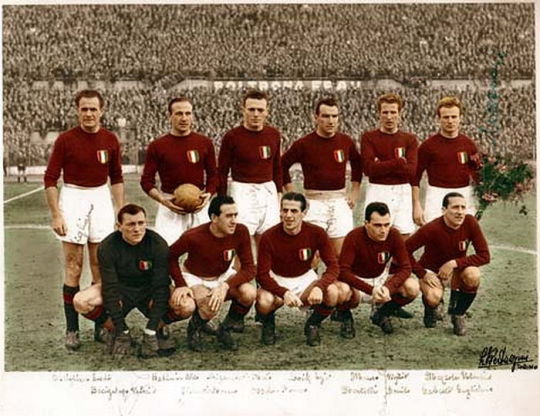
Era il 4 maggio 1949
quando la tragedia di Superga spezzò la leggenda del Grande Torino.
L'aereo con a bordo l'intera squadra si schiantò sul colle di Superga non lasciando scampo a nessuno dei suoi 31 passeggeri. Una delle squadre più forti della storia del calcio improvvisamente sparì lasciando sgomenta un'intera nazione.
Simili indimenticabili tragedie, al di là della ricerca di ogni possibile spiegazione, ci toccano a livello umano facendo sorgere in noi importanti domande tipo:
Perché le disgrazie capitano anche alla brava gente?
Siamo predestinati, oppure esiste un karma?
E soprattutto, dove sono i morti?
Cosa accade quando si muore?
Molti non sanno che la risposta a queste domande esistenziali sono alla portata di tutti in un libro antico ma sempre attuale: la Bibbia.
#curiosità
Le antiche origini del calcio.
I cinesi sono stati i primi a divertirsi calciando palloni nelle reti per sport nel III secolo a.C., e il gioco del calcio come lo conosciamo oggi è stato formalizzato in Inghilterra nel XIX secolo. Ma il predecessore della maggior parte dei moderni giochi con il pallone è nato nelle Americhe.
“Il concetto di sport di squadra trova le proprie origini in Mesoamerica”, afferma Mary Miller, docente di storia dell’arte all’Università di Yale che ha studiato numerose testimonianze di questo sport.
In Mesoamerica, la vasta regione storica che si estende dal Messico al Costa Rica, le civiltà fiorirono ben prima che Colombo le “scoprisse”, e molti di questi popoli praticavano uno sport che prevedeva l’uso di una pesante palla fatta di una sostanza ricavata dalla resina degli alberi.
📚 Alcune considerazioni.
Il gioco del calcio da secoli affascina intere generazioni e nazioni, talvolta fino al punto di dettare comportamenti sociali, instillare rivalità,addirittura odio per gli avversari, e/o diventare una vera e propria ludopatia.
Questo perché, anche se il calcio e lo sport hanno i loro lati positivi, per goderne i benefici bisogna mantenere il giusto equilibrio.
Come ci si può riuscire?
Tenendo conto di alcuni fattori che hanno a che fare anche con la salute mentale/fisica.
📚🔍Tutti i links di riferimento alla trattazione, li trovi nel mio Threads.
It was May 4, 1949
when the Superga tragedy broke the legend of Grande Torino.
The plane with the entire team on board crashed on the Superga hill, leaving no escape for any of its 31 passengers.
One of the strongest teams in the history of football suddenly disappeared, leaving an entire nation dismayed.
Such unforgettable tragedies, beyond the search for any possible explanation, affect us on a human level, raising important questions in us such as:
Why do misfortunes happen to good people too?
Are we predestined, or is there karma?
And above all, where are the dead?
What happens when you die?
Many do not know that the answers to these existential questions are within everyone's reach in an ancient but always current book: the Bible.
#curiosity
The ancient origins of football.
The Chinese were the first to enjoy kicking balls into nets for sport in the 3rd century BC, and the game of football as we know it today was formalized in England in the 19th century.
But the predecessor of most modern ball games originated in the Americas.
“The concept of team sport has its origins in Mesoamerica,” says Mary Miller, a professor of art history at Yale University who has studied numerous examples of this sport.
In Mesoamerica, the vast historical region that extends from Mexico to Costa Rica, civilizations flourished well before Columbus "discovered" them, and many of these peoples practiced a sport that involved the use of a heavy ball made of a substance obtained from tree resin.
📚 Some considerations.
The game of football has fascinated entire generations and nations for centuries, sometimes to the point of dictating social behavior, instilling rivalry, even hatred for opponents, and/or becoming a real gambling addiction.
This is because, even if football and sport have their positive sides, to enjoy their benefits you need to maintain the right balance.
How can this be achieved?
Taking into account some factors that also have to do with mental/physical health.
📚🔍All the reference links to the discussion can be found in my Threads.
4 notes
·
View notes
Text

Books Destroyed to Control Knowledge......
By Moe Bedard and William Blades - Since man could write, books have been some of the most Burning books prized possessions in all the world. Men would travel the globe, and spend vast fortunes in order to acquire the knowledge written on pages to fill their massive libraries.
Just as fast as they could build their limestone storehouses of wisdom, they were destroyed. There are many forces of nature that have caused the destruction of millions of original one of a kind books over the course of the last few thousands years. But no force has been so destructive as that of man.
Almost every race, country, religion, king and dictator has the ash of burnt books on their hands.
There are many stories over the last few thousand-years about the destruction of these libraries, and books being lost forever. There was the Library of the Serapeum in ancient Egypt that was set ablaze by the orders of Theophilus of Alexandria, who was so ordered by Theodosius I. There was the burning of the Great Library at Alexandria in 391 AD, and the Maya codices of the Yucatán were tossed to the flames by the Spanish conquistadors and Catholic monks.
The burning of the Imperial Library of Constantinople in the Byzantine Empire by the Templar Crusaders in 1204 AD. The House of Wisdom in Baghdad Iraq was destroyed in 1258 AD by the Mongol Invaders. The destruction of the United States Library of Congress in Washington, D.C. by Troops of the British Army in 1814 AD.
This list of destroyed books, and libraries can go on and on.
Book-Burning-Christian THE HISTORY OF DESTROYED LIBRARIES AND BOOKS
One of the earliest records of the destruction of books is told to us by St. Luke, when, after the preaching of Paul, many of the Ephesians "which used curious arts brought their books together, and burned them before all men: and they counted the price of them, and found it 50,000 pieces of silver" (Acts xix, 19).
There were books and what they called little scrolls that were said to be based on gnosis, alchemy, and magic. The little scrolls had short magic sentences on them and were in high demand. They had written on them various prayers and spells as protection against such things as the "evil eye," and evil demons.
One of the greatest ancient libraries mentioned above was built by the dynasty of the Greco-burning library Alexandria Egyptian Ptolemies who had built two in Alexandria. These ancient books of early ages were written on sheets of parchment, having a wooden roller at each end so that the reader needed only to unroll a portion at a time. The libraries were burnt to the ground on multiple occasions; once during Caesar's Alexandrian War in 48 BC, and again in 640 AD when it was burnt by the Saracens.
The great Phoenician city of antiquity, Carthage fell to the Romans in 146 B.C. during the final Punic Wars, and approximately a half a million volumes of one of a kind Phoenician books and manuscripts were burnt.
The followers of the Islamic prophet Muhammad, the Mohammedans reason for destroying books were said;"If they contain what is in the Koran they are superfluous, and if they contain anything opposed to it they are immoral." In the 15th century the great library of the Emperor Constantine, containing 120,000 Manuscripts, and all the Christian churches were looted of their books and thrown into the sea upon the orders of Mohammed II.
At Cremona, in 1569, 12,000 books printed in Hebrew were publicly burnt as heretical, simply on account of their language; and Cardinal Ximenes, at the capture of Granada, treated 5,000 copies of the Koran in the same way.
At the time of the Reformation in England a great destruction of books took place. The antiquarian Bale, writing in 1587, thus speaks of the shameful fate of the Monastic libraries:
At the Great Fire of London in 1666, the number of books burnt was enormous. Not only in private houses and Corporate and Church libraries were priceless collections reduced to cinders, but an immense stock of books removed from Paternoster Row by the Stationers for safety was burnt to ashes in the vaults of St. Paul's Cathedral.
Friars, an Order which was at constant war with the illiterate secular Clergy. It runs thus:—" In the year 1439, two Minorite friars who had all their lives collected books, died. In accordance with popular belief, they were at once conducted before the heavenly tribunal to hear their doom, taking with them two asses laden with books.
At Heaven's gate the porter demanded, 'Whence came ye?'
The Minorities replied 'From a monastery of St. Francis.' 'Oh!' said the porter, 'then St. Francis shall be your judge.' So that saint was summoned, and at sight of the friars and their burden demanded who they were, and why they had brought so many books with them. 'We are Minorities,' they humbly replied, 'and we have brought these few books with us as a solatium in the new Jerusalem.' 'And you, when on earth, practised the good they teach?' sternly demanded the saint, who read their characters at a glance.
Their faltering reply was sufficient, and the blessed saint at once passed judgment as follows:—' Insomuch as, seduced by a foolish vanity, and against your vows of poverty, you have amassed this multitude of books and thereby and therefore have neglected the duties and broken the rules of your Order, you are now sentenced to read your books for ever and ever in the fires of Hell.' Immediately, a roaring noise filled the air, and a flaming chasm opened in which friars, and asses and books were suddenly engulfed."
"Their pages mangled, burnt and torn,
The loss was his alone;
But ages yet to come shall mourn
The burning of his own."
The second poem commences with the following doggerel:—
"When Wit and Genius meet their doom
In all-devouring Flame,
They tell us of the Fate of Rome
And bid us fear the same."
SOURCES: The Enemies of Books By William Blades
4 notes
·
View notes
Text
Images of Maria Malibran -
From Wikipedia - "Maria Felicia Malibran (24 March 1808 – 23 September 1836) was a Spanish singer who commonly sang both contralto and soprano parts, and was one of the best-known opera singers of the 19th century. Malibran was known for her stormy personality and dramatic intensity, becoming a legendary figure after her death in Manchester, England, at age 28. Contemporary accounts of her voice describe its range, power and flexibility as extraordinary." Later in her article, the cause of death was identified as sequelae from falling off of a horse.
1824 Maria Malibran by Achille Devéria. From Wikimedia 1197X1499.

1829 Presumed portrait of Maria Malibran by Alexandre-Jean Dubois-Drahonet (private collection). From pinterest.com/marcellagarsia/fashion-in-painting-xix-secolo/1820s/; fixed cracks w Pshop 1280X1625.

1829 Maria Malibran Garcia by Henri Grevedon (BnF, département Musique). From gallica.bnf.fr/ark//12148/btv1b8426533k via pinterest.com/brobri12/artbreeder/ 979X1293.

1830 Maria Malibran as Desdemona in Rossinis Otello by Henri Decaisne (location ?). From Wikimedia 2195X3234.

ca. 1834 Maria Malibran by ? (location ?). From Wikimedia; fixed flaws w Pshop 789X1070.

1835 Mme. Malibran by ? (BnF, département Musique). From gallica.bnf.fr/ark//12148/btv1b10524951z# 897X1084.

Maria Malibran by ? (Royal Academy of Music - London, UK). From artuk.org; fixed biggest flaws w Pshop 1465X1850.

#1820s fashion#1830s fashion#Romantic era fashion#Louis-Philippe fashion#Maria Malibran#Achille Devéria#Alexandre-Jean Dubois-Drahonet#Henri Grevedon#Henri Decaisne#1820s#1830s
14 notes
·
View notes
Text
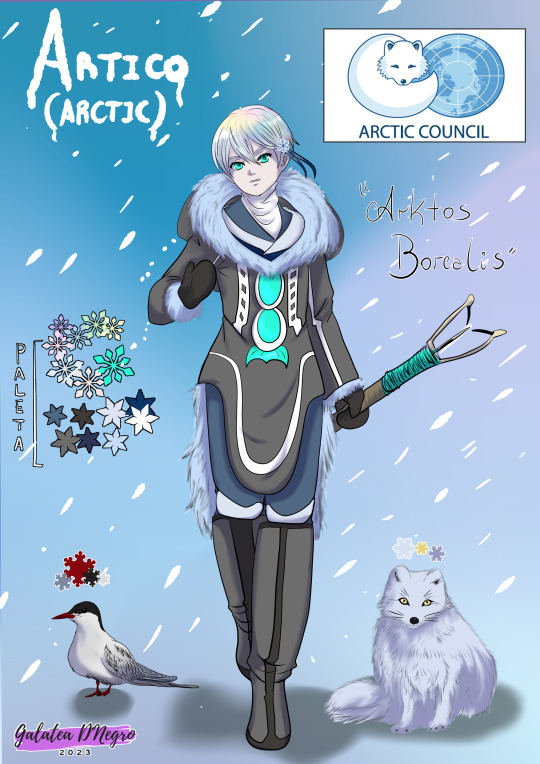
The twin brother of Aurora~ :D Hope you like it!
HCS (spanish - english) below the cut!
-Si bien desde el 900 al 1000 DC fueron habitadas por vikingos y los pueblos originarios los Inuit, ancestros que comparte directamente con Matthew, y los nordicos e Inglaterra llegaron desde el S XIV, las primeras expediciones modernas comenzaron en el S XIX. -Sus países de influencia directa (sus "tutores") son Canadá, los nórdicos (Dinamarca, Finlandia, Islandia, Noruega Suecia), Rusia y Estados Unidos. -A diferencia de su hermana no tiene bandera actual ni nominal, pero en 1991 se declaró el Concilio Artico desde Estado Unidos, dándole una simbología propia, con el objetivo de preservar la geografía y el medio ambiente, en la responsabilidad de todos los tutores y países observadores. Más info: arcticportal.org/
FISICO:
-Sus ojos son iguales a Aurora, pero su pelo tiene la característica de las nubes iridiscentes o nacaradas que se ven con frecuencia en los polos (fenómeno conocido como irisación). -Habla suave y lento, pero tiene un humor más jocoso que Aurora, ya que el tuvo siempre habitantes humanos y está más acostumbrado a los viajes y las visitas. -Su aspecto tiene más rasgos asiáticos, por la permanencia histórica de los Inuit. -Si bien su fauna autoctona es escasa, hay muchas migraciones en las que se destacan el zorro ártico, el charrán artico y el oso polar (¡Sí, comparten a Kumajiro!).
SOBRENATURAL:
-Así como Aurora, su nombre es una opción. Viene de la etimología griega y significa "oso". Algunos países lo llaman de manera puntualmente diferente: por ejemplo, Heracles lo llama Calisto, referido a la mitología relacionada con la Osa Mayor. Por su lado, relacionado con la mitología súfi derivada del Islam, Sadik lo llama Jabal Qaf, "la montaña del Norte de los Nortes". Finalmente, Feliciano y Lovino lo llaman Rupes, refiriendo a la Rupes Nigra, la ascención máxima del alma peregrina, que aparece en la Divina Comedia de Dante Alghieri. -Sabe donde está Papa Noel (Santa Claus), pero es un secreto que guarda junto con Finlandia. Algunos dicen que es una metáfora de la pureza espiritual que conserva en sí mismo, y muchas religiones y mitos comparten esta idea.
-Datos curiosos:
-La única bandera que posee en sus geografía es la rusa, plantada en 2007. Los Yupik, gente de la siberia, llegó a mezclarse con algunos grupos Inuit en edades tempranas. -El 10 de abril de 2013, el argentino Juan Benegas llegó a pie al polo norte geográfico a partir de la base rusa Barneo, distante unos 170 km del objetivo. Fue acompañado por cinco rusos, un italiano y un belga. -Autora también tiene el Tratado Antártico, conformado por Argentina, Australia, Chile, Francia, Noruega, Nueva Zelanda y el Reino Unido. -Argentina llegó a plantar bandera finalmente en 2016, www.telam.com.ar/notas/201604/…
-----
Finally! It was a little more complex to make this OC because I had to read twice as much as with Aurora, but here it is! I hope you like it~
Some HCs:
-Although from 900 to 1000 AD they were inhabited by Vikings and the original Inuit peoples, ancestors that they share directly with Matthew, and the Norse and England arrived from the XIV century, the first modern expeditions began in the XIX century. -His countries of direct influence (his "tutors") are Canada, the Nordics (Denmark, Finland, Iceland, Norway, Sweden), Russia and the United States. -Unlike his sister, does not have a current or nominal flag, but in 1991 the Arctic Council was declared from the United States, giving it its own symbology, with the aim of preserving geography and the environment, under the responsibility of all guardians and observer countries. More info: arcticportal.org/
PHYSICAL:
-Her eyes are the same as Aurora's, but his hair has the characteristic of the iridescent or pearly clouds that are frequently seen at the poles (a phenomenon known as iridescence). -He speaks softly and slowly, but he has a more jocular humor than Aurora, since he always had human inhabitants and is more accustomed to travel and visits. -His appearance has more Asian features, due to the historical permanence of the Inuit. -Although its native fauna is scarce, there are many migrations in which the arctic fox, the arctic tern and the polar bear stand out (Yes, they share Kumajiro!).
SUPERNATURAL:
-Just like Aurora, his name is an option. It comes from the Greek etymology and means "bear". Some countries call it in a different way: for example, Heracles calls him Callisto, referring to the mythology related to. For his part, related to Sufi mythology derived from Islam, Sadik calls him Jabal Qaf, "the mountain of the North of the Norths". Finally, Feliciano and Lovino call it Rupes, referring to the Rupes Nigra, the highest ascent of the pilgrim soul, which appears in Dante Alghieri's Divine Comedy. -He knows where Papa Noel (Santa Claus) is, but it is a secret that he keeps together with Finland. Some say that it is a metaphor for the spiritual purity that he preserves in himself, and many religions and myths share this idea.
-Fun facts:
-The only flag it has in its geography is the Russian one, planted in 2007. The Yupik, people from Siberia, came to mix with some Inuit groups at an early age. -On April 10, 2013, the Argentine Juan Benegas reached the geographic North Pole on foot from the Russian base Barneo, some 170 km from the target. He was accompanied by five Russians, an Italian and a Belgian. -Author also has the Antarctic Treaty, made up of Argentina, Australia, Chile, France, Norway, New Zealand and the United Kingdom. -Argentina finally planted the flag in 2016, https://www.telam.com.ar/notas/201604/144574-la-primera-expedicion-nacional-al-polo-norte-planto-la-bandera-argentina-en-su-destino.html
#hetalia#hetalia oc#aph artic#artic oc#rosas headcanons#axis powers hetalia#axis powers ヘタリア#hetalia axis powers#axispowershetalia#hetalia art#hws artic
6 notes
·
View notes
